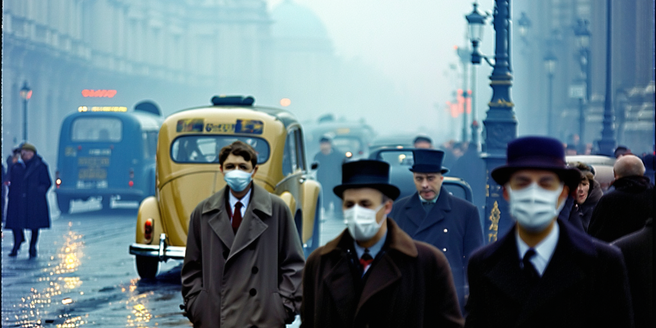
Understanding the Causes of the Great Smog
The Great Smog of 1952 was primarily caused by a period of cold weather, combined with an anticyclone and windless conditions that accumulated airborne pollutants. This smog contained high amounts of coal smoke due to the prevalent use of low-quality coal for home heating. The industrial activities across the city further exacerbated the pollution levels. While London was already notorious for its fog, this event turned the city into a choking hazard. Visibility plummeted dramatically, and the city was engulfed in a thick layer of soot-laden fog. The impact of these climatic and anthropogenic factors led to one of the worst air quality disasters in history, revealing how severely human actions can hinder atmospheric clarity and health, paving the way for significant environmental debates.
The Impact on Daily Life in London
During the Great Smog of 1952, Londoners experienced significant disruptions to their day-to-day activities. The dense fog reduced visibility to mere meters, making transportation almost impossible. Public transport was halted as buses and trains were unable to navigate the fog-laden streets. Even ambulances couldn’t respond promptly to emergencies, putting lives at risk. Schools and businesses were forced to close, and people were advised to stay indoors. The blanket of smog penetrated buildings and homes, filling them with suffocating smoke and reducing indoor air quality. Those who ventured outside faced the daunting challenge of navigating through the murkiness, often losing their way in the familiar streets of London. The city came to a standstill, illustrating the deep impact that severe air pollution can have on urban life.
Health Consequences and Mortality Rates
The health effects of the Great Smog were devastating and immediate, with thousands of Londoners suffering from respiratory issues. Hospitals were overwhelmed with patients experiencing breathing difficulties, especially those with existing health conditions such as asthma or bronchitis. Reports estimate that during the smog, around 4,000 people died prematurely, with some sources later suggesting this number might have risen to 12,000. The vulnerable, including the elderly and children, were especially at risk. The occurrence highlighted the deadly impact of air pollution on public health, sparking concern among citizens and authorities alike. The smog also brought attention to the correlation between air quality and mortality rates, prompting investigations and discussions regarding the urgent need for policies to protect citizens from future atmospheric hazards.
Government Response and Public Awareness
The Great Smog of 1952 served as a harsh awakening for both the public and the government regarding air pollution’s dangers. Initially, the government was slow to respond, primarily because such occurrences, though not on this scale, were common in London’s past. However, the sheer magnitude of this crisis forced the authorities to take immediate action. Public health warnings were issued, advising people to stay indoors and avoid the fog. The disaster marked a significant shift in public awareness regarding the environment and the health impacts of pollution. As the crisis unfolded, it spurred debates in Parliament and among citizens about the necessity of stricter air quality regulations. This growing awareness laid the foundation for future legislative measures meant to counteract environmental neglect.
Long-term Environmental and Policy Changes
The catastrophic event of the Great Smog set the stage for lasting environmental and policy changes in the UK. Recognizing the urgent need to improve air quality, the British government introduced the Clean Air Act of 1956. This landmark legislation aimed to regulate air pollution by controlling domestic and industrial emissions. It prompted a shift from coal to cleaner energy sources and encouraged the use of smokeless fuels. Over time, these measures significantly reduced London’s air pollutants, setting a precedent for how man-made environmental disasters could be tackled effectively. The Great Smog thus marked a turning point in the UK’s environmental policy landscape, influencing future legislation and inspiring actions worldwide to prioritize clean air for all citizens.
